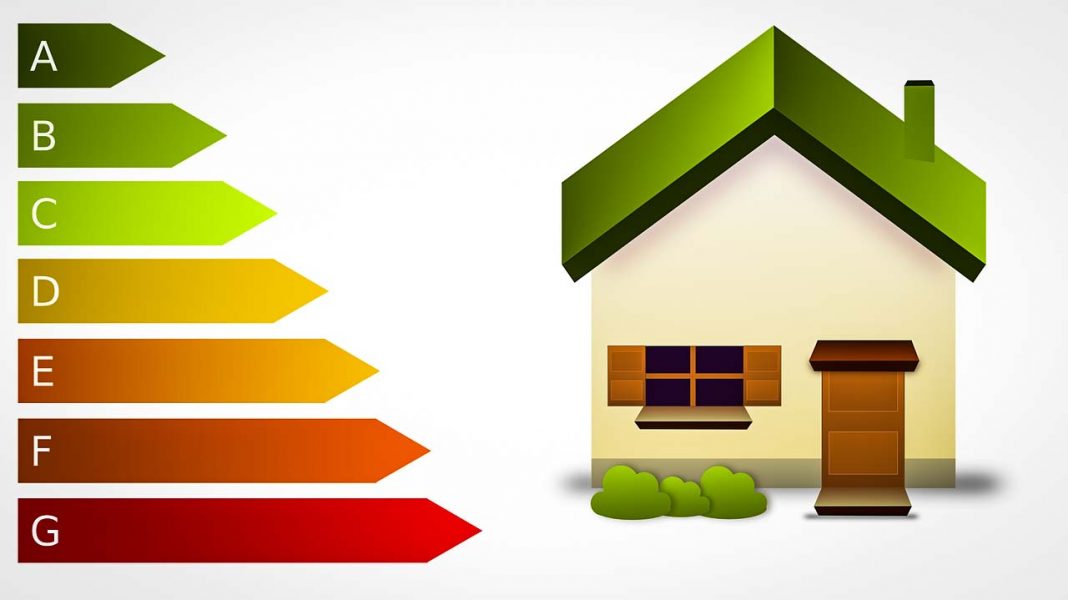Whether you’re retrofitting or not, here are some helpful pointers for regional energy standards, ratings, and labelling systems. Stars, numbers, and alphabetical symbols indicate the optimum energy efficiency of your building and appliances. Understanding what they mean can help occupants and building managers reduce unnecessary emissions from private and public buildings alike.
General
Passivhaus standards require a building to maintain a comfortable level of heat, light, and air quality with next to no energy consumption. It’s so stringent, it is hard to get certified via the retrofit route, but far from impossible.
EnerPHit is a certification applied to retrofits that incorporate Passivhaus components and achieves similar standards. The energy demand for heating can be reduced by as much as 90%.
There is an abundance of rating tools that assess and certify the efficiency of retrofitted (and new) properties. Many are members of the World Green Building Council, which they helpfully list. LEED and BREEAM are among the most frequently mentioned in various sources.
Regional
USA
Energy Efficiency Ratio (EER) and Seasonal Energy Efficiency Ratio (SEER) – Measurements for cooling and air conditioning units in the United States
America’s Home Energy Rating System (HERS) Index calculates the performance and certifies the energy rating of homes.
UK
Display Energy Certificates (DECs) are the UK’s response to the EU Energy Performance of Buildings Directive. To improve the efficiency of public buildings, it requires public bodies to be transparent with their actual energy use.
See also Energy Performance Certificates (EPCs, below) for private properties in Europe.
Guides explaining general energy ratings and energy-efficient appliances, as well as choosing the right fridge or freezer, are available from British renewable energy company Ovoenergy.
Republic of Ireland
Building Energy Rating Certificate (BER), Sustainable Energy Authority of Ireland (SEAI) – Explains the A-G rating required when selling or renting out a dwelling. A helpful table of cost-savings for higher ratings can be found here.
Europe
The following guides are all found on the European Commission website.
European Product Database for Energy Labelling (EPREL) – All electrical appliances sold in the EU require an energy label and need to be registered on this database. It was introduced in 2019.
Energy Performance Certificates (EPCs) – Part of the EU Building Directive. Registered information about a building’s performance, emissions, and what methods owners may have taken to improve efficiency. Also applies to the UK.
Rescaled ratings were introduced in March 2021 to remove A+ and above in order to make the system easier to understand. It now ranges from A (most efficient) to D, although best-performing products at the time still only reach B, as a means to provide room for progression and development.
There’s plenty of info about European labels and Ecodesign here and details on obligations for suppliers here.
Australia and New Zealand
The two countries have teamed up to create an integrated Equipment Energy Efficiency (E3) programme, covering efficiency standards and labelling for equipment and appliances.
EECA (Energy Efficiency and Conservation Authority) has guides to rating appliances and the assessment of which heat pumps and air-con units are suitable for both countries (zoned).
Nationwide House Energy Rating Scheme (NatHERS) is based on the Residential Efficiency Scorecard from Victoria. Government-approved assessors award stars based on how much energy is used to heat or cool to a comfortable occupancy temperature. The more stars awarded out of 10, the better performing the property. It is also developing a Whole of House system to assess appliances, water, lighting, and pool pumps.
Japan
The Energy Saving Label Program is a two-part system for most household electronics. There’s the obligatory 5-star rating and then a voluntary green or red ‘e’ mark to show whether the product meets standards or not. Both must be shown as a physical sticker, but interestingly goods that fail can still be sold.
South Africa
The South African Accreditation System (SANAS) requires property owners to have their properties assessed and meet D-rating standards by 2023. The scale ranges from A (most efficient) to G. The government’s energy department has published a comprehensive guide to the labelling system.
Chile
The Chilean Law on Energy Efficiency (CLEE) is still in the process of finalisation but is expected to require buildings to perform mandatory checks on efficiency and emission levels; tenants or landlords must retain certificates to prove it.


